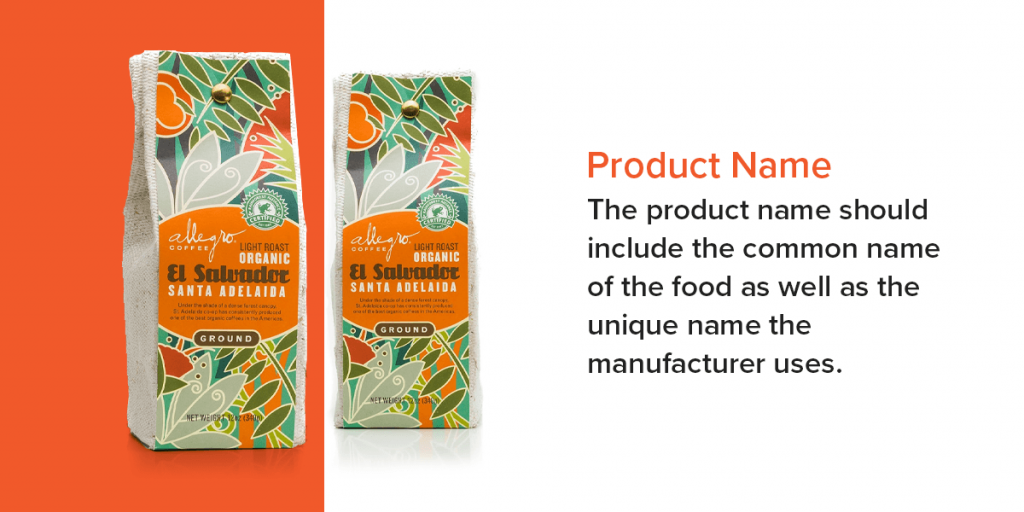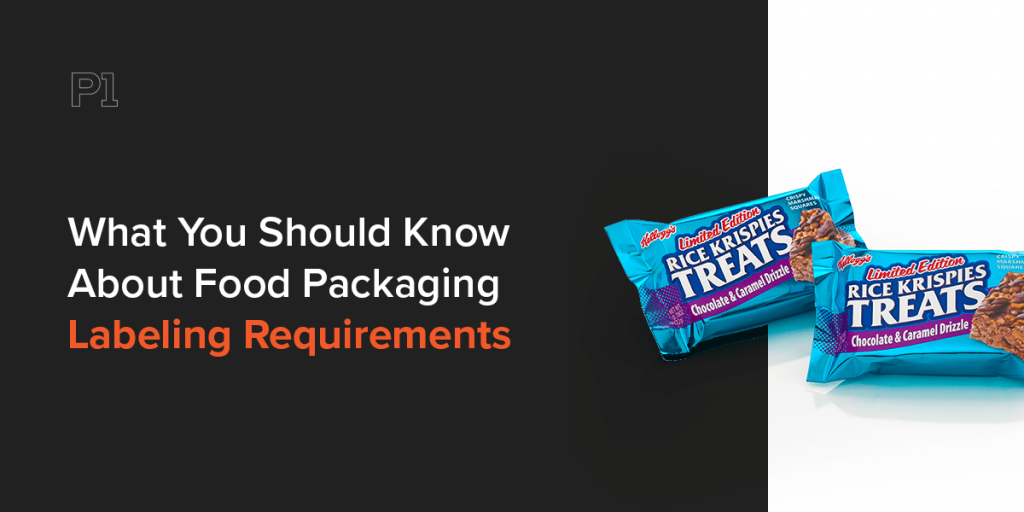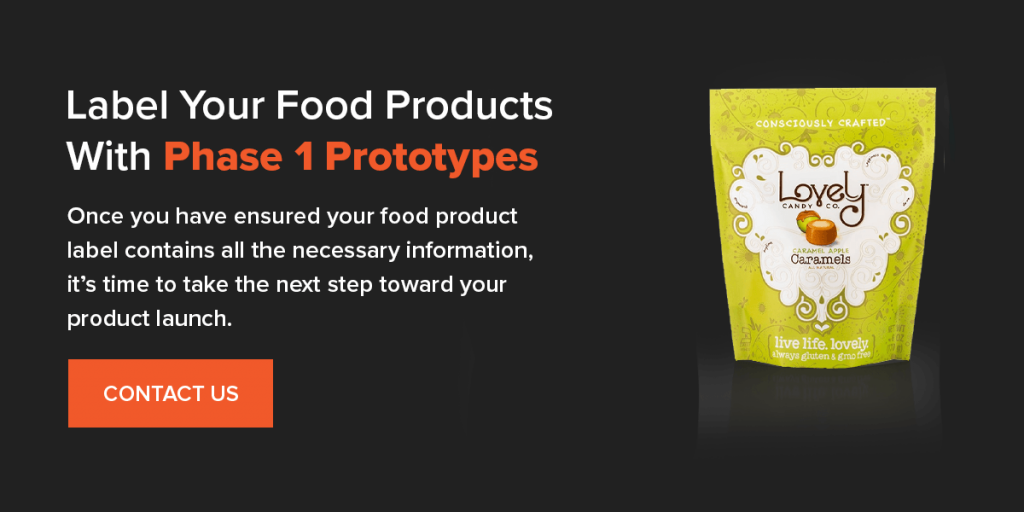What You Should Know About Food Packaging Labeling Requirements
By: phase1If your business is selling a food product, it’s crucial to make sure you label it correctly. Like every country, the United States has rules and regulations for food packaging label requirements. By following all the requirements for food packaging, you can sell your food products with confidence.
But what do these requirements look like, and who makes them? Is there anything you can avoid putting on your label? Why are there strict labeling requirements in the first place? We’ll answer these questions and more in the sections below.
What Foods Require Food Labels?
According to the Food and Drug Administration (FDA), all packaged food products on the commercial market need a label. The FDA requires food labeling for most prepared foods, including the following:
- Cereals
- Bread
- Frozen foods
- Canned foods
- Desserts
- Snacks
- Drinks
It’s worth noting that nutritional labeling on “conventional foods” — fish and raw fruits and vegetables — is voluntary according to FDA labeling requirements.
Why Are Food Labels Required?
The FDA’s role is to ensure foods sold in the United States are safe for consumers. Proper labeling is essential for the FDA’s mission and is a requirement that they enforce for any food produced within the United States or imported from foreign countries.
When consumers shop, a food item’s label is one of the first things they see. It informs their buying decision by giving them the information they need before making a purchase. Proper labels promote accountability in food manufacturers and give consumers the power to buy foods that fit their dietary needs and preferences.
FDA vs. USDA — Who Regulates What?
The FDA and the United States Department of Agriculture (USDA) are the two primary regulatory bodies that oversee labeling in the U.S.:
- FDA: the FDA handles the labeling requirements of most domestic- and foreign-packaged food goods sold in the United States. The FDA also oversees the use of health information and specific claims on labels, like “fat-free,” “low calorie” and more. These claims must follow set definitions by the FDA and other regulatory bodies.
- USDA: The USDA handles labeling requirements for poultry, egg products and meat. The labels for these products must include extra information, including the signature line, safe handling instructions and inspection legend. The USDA also oversees the organic certification process, a five-step system that determines whether a product can use the USDA Organic Seal.
What Information Does the FDA Require?
The FDA requires food manufacturers to include the following information on their product labels.
Product Name
The product name must appear on the principal display panel (PDP). As the front-facing section of the product, the PDP is typically the first part of a product’s packaging that customers will see when shopping. The product name should include the common name of the food as well as the unique name the manufacturer uses.

The Name and Address of the Manufacturer
The manufacturer’s name and address should also appear on the information panel of a product’s packaging. The information panel is the area of the label directly to the right of the PDP as the consumer views it.
Product Weight
Food manufacturers must include the product weight on the item’s PDP. Express solid, semisolid or viscous foods in physical weight formats like grams or ounces. Express liquid food items’ weight in fluid measurements like fluid ounces.
Ingredients
The food item’s ingredients list should appear on the information panel. It must include every individual ingredient in the food item listed in descending order of predominance or weight. Note that the ingredients list must include any artificial flavors and preservatives the food item contains.
Number of Servings Per Product
The information panel must note how many servings of the product the complete package contains.
Serving Size
The serving size, also listed on the information panel, is the amount of the product that contains the daily values described in the nutrition facts section.
Nutrition Facts
The nutrition facts section describes the amounts of the following items contained in a serving size of the product:
- Calories
- Total fat
- Cholesterol
- Sodium
- Protein
- Carbohydrates
- Vitamins
- Minerals
“Best Before” Date
This date must appear on the label and indicate the date before which the product will be at its peak of quality.
Any Allergy-Causing Food
The FDA requires manufacturers to reveal any allergy-causing food present in the product. The most common allergy-causing foods include the following:
- Peanuts
- Tree nuts
- Crustacean shellfish
- Fish
- Soy
- Eggs
- Milk
Barcode
A barcode specific to the product must appear on the label. Retailers use the barcode to scan the product during customer checkout.
What Information Does the USDA Require?
The USDA has special labeling requirements that differ from the FDA’s, including the following:
Resource Inspection Legend
The resource inspection legend provides information on the product’s inspection before it went to market.
Signature Line
The signature line is the general office information for contacting the manufacturer.
Safe Handling Instructions
Since many food items that the USDA oversees include raw meat, it is crucial to include safe handling instructions for the safety of consumers.
Who Oversees Health Claims in Food Labeling?
The FDA oversees the inclusion of health claims on food labels. Authorized claims are ones the FDA has reviewed and found supported by scientific evidence.
To gain FDA approval, a health claim must earn significant scientific agreement (SSA) from qualified experts that the available scientific evidence supports it. You can visit the FDA website for more information about this process.
What Happens if You Fail to Label or Incorrectly Label Your Products?
Failing to label your product or using an incorrect label can lead to a lengthy and costly recall process. Understanding labeling requirements before releasing a product will save manufacturers valuable time, money and effort in fixing a product release with a faulty label. Having a proper label will also help you avoid potential legal issues while establishing a bond of trust with your customers.
Label Your Food Products With Phase 1 Prototypes
Once you have ensured your food product label contains all the necessary information, it’s time to take the next step toward your product launch. Phase 1 Prototypes can help you bring your product to market faster by offering you prototype labeling that lets you know if you need to make any changes before launch. We’re your best option when time is of the essence, responding to quote requests in less than 24 hours and getting your products into your hands in three days or less.
Request a quote online today to get started!



Leave a Reply